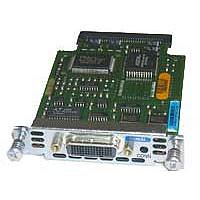Most difficult thing is to implement the device into the customer network. This needs a lot of planning and discussions about the design and how it should be implemented.
The logic is, that you will mostly try to implement the ACE in between. From one VLAN into the other. The ACE will provide for VIP and VLAN interfaces to be the gateway for traffic back to the clients. Even bypassing the ACE is possible. This should be planned before and it should be clear at what point the device will be implemented. It might be a good idea to have a good look at grown network struktures. While implementing the ACE it all depends on good understanding of te traffic flow and the current network infrastructure. The best is to communicate possible problems and catches.
ACE booting messages. Here you can see, there is some Linux/GNU code included in the ACE…
Unmounting done…
INIT: Switching to runlevel: 6
INIT: Sending processes the KILL signal
Rebooting… Rest
System Bootstrap, Version 12.2[120],
Copyright (c) 1994-2006 by Cisco Systems, Inc.
Slot 3 : Running DEFAULT rommon image …
ACE platform with 1048576 Kbytes of main memory
Loading disk0:c6ace-t1k9-mz.3.0.0_A1_6_2a.bin. Please wait ….
Uncompressing Linux…
Starting the kernel…
INIT: version 2.78 booting
Mounting Second Ramdisk ….
Second Ramdisk successfully mounted
Starting periodic command scheduler: cron.
Configuring network interfaces.
CF dump: Register callback functions
dosfsck 2.11, 12 Mar 2005, FAT32, LFN
/dev/cf: 8 files, 24304/62532 clusters
FAT FS is ok
Compact Flash size 1000512(in 1k blocks) …
Core file size 204800
Available free size in cf is 611648 (in 1k blocks) …
set_coredump 2.11, 12 Mar 2005, FAT32, LFN
first_cluster = 0x608c num_cluster = 0x40 (64)
inserting procfs
inserting isan_kthread
inserting wiremod
inserting klib
inserting resdrv
inserting tlv
inserting sse
inserting kpss
inserting sdwrap
creating sdwrap device
inserting klm_tl
creating tl device
inserting klm_scp
inserting klm_mts
creating mts0 device
creating mtscfg0 device
inserting utaker
creating utaker0 device
creating utaker1 device
inserting sysmgr-hb
creating sysmgr-hb device
inserting modlock
creating modlock device
inserting bufmgr
inserting pkt_fifo
inserting encdec
creating encdec device
inserting pseudo
inserting drammap mod
creating drammap device
inserting ixp_dnld
creating ixp_dnld device
inserting sysdrv
creating sysdrv device
New registry installed.
INIT: Entering runlevel: 3
inserting i2c module
inserting ssa driver
inserting cde driver
inserting bf_dnld driver
inserting pfm_drv driver
inserting regaccess driver
inserting bf_nvram driver
Firmware compiled 24-Aug-07 17:47 by integ Build [26368]
ACE Daughter boards DB1 not present DB2 not present.
downloading fpga to cde 1
Read 3262456 bytes from ./cde1_core.bit
FPGA Date: 2007/ 9/13 Time: 3:38: 5
CDE 1 download successful
downloading fpga to cde 2
Read 2377744 bytes from ./cde2_core.bit
FPGA Date: 2007/ 8/15 Time: 20:59:47
CDE 2 download successful
FPGA Programming Done
CDE 1 revision ID 0403
CDE 2 revision ID 0402
enabling cde 0 interrupts
finished CDE setup
Configuring NP 1 Memory
Configuring NP 2 Memory
………………………..
Downloading NP 1 Image
………………………..
Downloading NP 2 Image
….. 0x40b214 (4239892) bytes downloaded
….. 0x40b214 (4239892) bytes downloaded
Loading Nitrox driver.
Writing register at address 3838 with e00
size = 8148
Ctx memory range(0x0000000-0x10000000)
Cleared 262144 1024-byte blocks in 5 requests.
Writing register at address 3898 with 1
Writing register at address 38b8 with 1
N2 SPI INIT PROGRAM.
Initializing Nitrox SPI1
configuring using falling clocks
Initializing CDE SPI registers
Nitrox init completed.
inserting IPCP klm
n2_perf_stats loaded
Waiting for NP handshake ……………………………………… Done
inserting IPCP klm
inserting cpu_util klm
Sleeping 10 secs… Done
Waiting for 3 seconds to enter setup mode…
No licenses installed…
Starting sysmgr processes.. Please wait…Done!!!
switch login:
